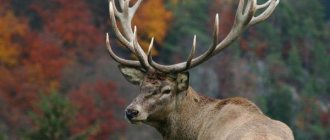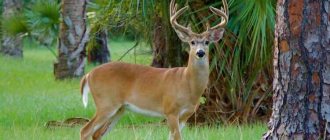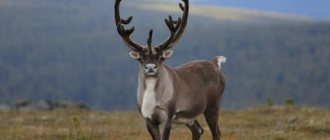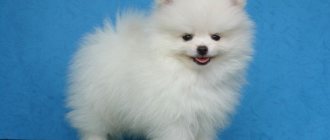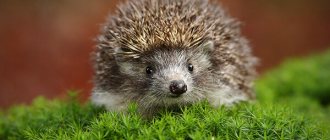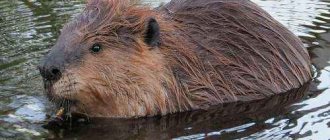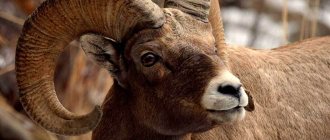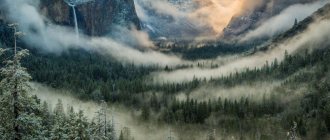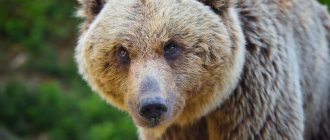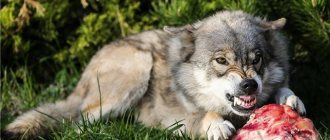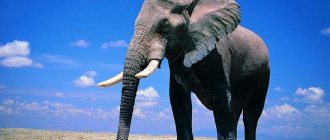For many peoples, deer is a sacred animal; for example, among the Celts it was considered a symbol of vitality, sun and fertility. He was personified with the god Cernunnos. In medieval heraldry, the image of this artiodactyl symbolized moderation and grace. Deer antlers have medicinal properties and are raw materials for the production of various medicines. The name of this beast is of ancient Slavic origin. The article will talk about the many varieties of deer, and will also give a brief description of some of its most interesting representatives. Each species is well adapted to life in harsh conditions. It's hard to believe, but man is considered his main enemy. Many species are listed in the Red Book, and most of them are completely exterminated.
general information
In the Olenev family there are three subfamilies - these are deer:
- real, or Old World;
- water;
- New World.
In addition, there are fifty-one species. Each species of deer has its own appearance and habits, which help them adapt and survive in different conditions - from deserts to arctic tundras. There are both small animals, the size of a hare, and large individuals weighing more than three hundred kilograms.
Their main feature is their horns; they are also called antlers. Males use them in fights during the mating season. Depending on the species, the size and shape differs:
- Caribou (reindeer) have antlers, both female and male.
- Water deer - antlers - are completely absent.
They live mainly in herds, although there are also loners among them. The duration of the mating season depends on the habitat:
- temperate latitudes – autumn, winter;
- tropics - all year round.
The female carries the baby for six to nine months. Mostly one or two fawns are born.
The basis of the diet of artiodactyls is herbaceous plants. During the summer months they prefer:
- chestnuts;
- berries;
- fruits;
- mushrooms;
- shoots and leaves of trees;
- nuts.
In winter, to quench their thirst, they eat snow and also eat:
- acorns;
- lichens;
- branches and bark;
- horsetail.
They do not disdain algae, crabs and fish. If there is a lack of minerals, they are able to gnaw on damp soil and their own shed antlers.
Old World Deer
The greatest diversity is demonstrated by real deer, the varieties of which number three dozen. Among them are such types as:
- noble;
- white-faced;
- pork;
- spotted;
- David;
- barasinga;
- crested;
- axis;
- Schomburgka;
- muntjac;
- sambar;
- Kulya;
- doe;
- tameng;
- Kalamiansky.
The red deer is the most famous, one of the most beautiful and stately animals of this family, living over a large territory - Scandinavian, Western European countries, on two American continents, China, Algeria, etc. The main condition for the place of residence is the presence of a nearby body of fresh water. They live in herds of up to ten individuals, and after the mating season their numbers increase and reach thirty. A characteristic feature of the species is the white spot located under the tail and the absence of spotting in the summer. Antlers are distinguished by a large number of branches, which form a kind of crown at the end of each horn. Depending on the types of deer, photos of which are presented in the article, the weight of the animal is different. For example, wapiti and deer have a body weight of over 300, and Bukhara deer - less than 100 kg. They prefer herbs, legumes and cereals in their diet. In the winter months, tree bark, shoots of trees and shrubs, mushrooms, chestnuts, and fallen leaves are eaten. In addition, when there is a lack of food, they do not hesitate to eat acorns, pine and spruce needles, and lichens. They visit artificial and natural salt marshes.
Varieties of deer: names
New World deer differ somewhat from their counterparts in the structure of their toe bones. List of representatives of these animals:
- mazama;
- swamp;
- black-tailed;
- roe;
- pampas;
- Pudu;
- elk;
- South Andean;
- whitetail or virginian;
- Peruvian;
- caribou or northern.
In appearance, the Virginian differs from its noble relative in its grace and smaller size. It received its interesting name for the original color of its tail, the bottom of which is white and the top is brown. White-tailed deer living in the Florida Keys weigh no more than 35 kg, while their representatives, who prefer northern areas, weigh 150 kg. Most of the time, individuals lead a solitary lifestyle and gather in herds for the mating season. In search of food, they destroy cereal crops, raiding agricultural fields. In winter they eat fallen leaves and tree branches, in autumn - nuts and berries, in summer and autumn - flowering plants and succulent grass.
The peculiarity of the black-tailed deer are the ears - they are simply huge. Therefore, it is often called big-eared, or donkey.
Caribou, or northern, included in the list of deer species, is considered particularly interesting. This is the only species in which both sexes wear antlers. In addition, it is distinguished by the upper lip, which is completely covered with hair, as well as a thick layer of subcutaneous fat and thick fur. The animal is of a squat build, has a slightly elongated skull, and does not have grace like other members of the family. The next feature is gregariousness; when they gather in fairly large groups, they can more easily endure the harsh living conditions in the taiga and tundra.
As a recovering species, caribou are listed in the Russian Red Book.
Types of reindeer
The following types of reindeer living in Eurasia are distinguished:
- Okhotsk;
- Novaya Zemlya;
- European;
- Siberian tundra;
- living on the Spitsbergen archipelago;
- Siberian forest;
- Barguzinsky
Reindeer are social animals. They graze in huge herds. For many years, reindeer herds migrate along the same route. Moreover, covering a distance of five hundred kilometers or more is not difficult for them. They are good swimmers and easily swim across bodies of water.
Scandinavian deer, on the contrary, avoid forested areas.
Siberian deer prefer to spend winters in forests. At the end of May they move to the tundra, where there are fewer insects (botflies, mosquitoes) and more food. They return to the forest again in August-September.
Caribou deer begin to move from the forest to the sea in April. Returns in October.
Among plants, reindeer moss is used as food, which is the basis of nutrition for nine long months. Scattering snow with their hooves and having a good sense of smell, they easily find mushrooms and berry bushes. To quench their thirst they eat snow. In addition, they are able to eat adult birds, their eggs, and small rodents. To maintain salt balance, they drink a lot of sea water, gnaw on shed antlers and visit salt marshes. If there are not enough minerals in the body, they are capable of gnawing each other’s horns.
The mating season begins in mid-October and lasts one and a half months. After eight months, offspring appear. The cub stays with its mother for two years. Reindeer live for about twenty-five years.
They get along well with people. They have a calm disposition and quickly get used to new living conditions.
Where does the doe live? Features of behavior
The fallow deer lives in the countries of southwest Asia and on the territory of almost all European countries. This type of deer was also introduced to Australia, Argentina, New Zealand, Peru, North America, South Africa, Chile, Japan and Madagascar. Today, wild populations of fallow deer still live in these areas.
Fallow deer is a forest animal; it prefers to live in mixed-type forests with open grassy edges and forest areas rich in undergrowth and young growth. The European fallow deer lives in bushy areas with a lot of grass. The fallow deer adapts to different conditions.
From the first months of spring until the end of summer, fallow deer lead an active lifestyle, preferably in the morning and evening hours. At this time, they go to watering places and graze in clearings in the forest. During the day, fallow deer rest in dense shady thickets. Resting areas are chosen mainly near bodies of water. In summer, fallow deer live alone or stay in small groups of up to 10 individuals.
Males and females move separately. Young calves walk with their mother. By the end of summer, the groups expand, forming large herds, females and males unite. The size of groups of fallow deer depends on the region and area; in some cases, the number of animals can reach 80 individuals.
The fallow deer lives in a certain territory that it does not like to leave. These are sedentary animals, their movements are insignificant. Most often, animals follow the same routes. They trample clear paths and paths that are very visible.
Fallow deer can move through the snow and forage for food in winter. But the animal is not adapted to move through deep snow cover. Fallow deer have a well-developed sense of smell and hearing. Vision is also well developed, but it is somewhat inferior.
Nature has endowed these artiodactyl animals with extraordinary dexterity and excellent maneuverability. They can easily overcome obstacles, jumping even two meters in height, which is very impressive. When there is danger, they escape with long leaps, because they are not lacking in speed and agility. Natural enemies of fallow deer include wolves, which chase deer, especially in winter. It is noteworthy that fallow deer are less shy and cautious compared to other types of deer, especially when kept in protected areas. They are almost not afraid of humans, they approach without fear and even eat from their hands.
Is elk, or elk, a type of deer?
Elk and deer are considered close relatives. However, in their lifestyle and appearance they differ from other representatives of the Deer family. Due to their differences, they were identified as a separate species, which forms several subspecies: East Siberian, Ussuri, Alaskan, etc. The moose has its own characteristics of the external structure:
- massive croup;
- powerful chest;
- long and thin legs;
- large hooves;
- the head is hook-nosed and large, with an overhanging fleshy upper lip;
- the body and neck are short.
The front legs have pointed hooves. This makes it possible to use them as weapons in fights with predators. One blow from them is enough to rip open an enemy's stomach or fracture his skull.
The elk is a species of large deer, i.e. it is recognized as the largest artiodactyl of this family. Its body weight is from 360 to 600 kg. In some areas there are males weighing 650 kg. Females are slightly smaller, but still look impressive.
The structure of the horns, the span of which is up to one and a half meters or more, and the weight of over 20 kg, is also of interest. They develop in a horizontal plane, and at the ends there are spade-shaped flat branches. Horns appear by the age of one and a half years, and by five they are already fully formed. Adults shed them every year. Moreover, in each new season, one additional protrusion is formed on the shoots.
The elk live in pairs or families with their growing young. Under unfavorable conditions they are capable of forming herds, but this lasts for a short period. They are excellent swimmers and can forage for food without going ashore. They love to feast on algae, moss and branches of coastal bushes.
Reproduction
In December, the rut of water deer begins. Males fight for the female using their unique fangs, which can rip open the neck of any opponent. After such fighting, many of the males are left with terrible scars on their faces and necks. The sounds that deer communicate with each other are very similar to the barking of dogs, and when mating they make unusual clicking sounds. Females call males with a quiet whistle. Pregnancy in females lasts six months. After birth, little fawns hide in dense bushes for a few more days, and then slowly begin to make forays with their mother.
Small species
In the hard-to-reach forests of Ecuador, Chile and Peru, you can find the smallest species of deer - the pudú. It has a short body, about 90 cm, a height of no more than 35 cm, and a weight of no more than 10 kg. The animal has a small head located on a short neck and oval-shaped small ears, which are covered with thick and dense hair. The external resemblance to other representatives of deer is questionable. However, on its head it has barely noticeable horns, completely hidden by hairs, and forming a small crest.
They live alone and form pairs only during the breeding season. These are quite cautious animals and are difficult to find in the wild. The species is in danger of extinction, as its tasty meat has made it a desirable prey for poachers and predators. The color of the smallest species of deer is gray-brown with indistinct spots. The animal feeds on algae, young shoots, foliage of trees and shrubs, succulent herbs, and fruits that have fallen to the ground. To feast on the succulent tops of tall trees, he stands on his hind legs and bends them down.
The mating season lasts approximately two months. The cub is born seven months later. Often this event occurs in the first days of summer. The baby grows quickly, and after three months it is indistinguishable in size from an adult deer. Complete dehorning occurs after another seven months. By this time he is approaching puberty. Life expectancy is no more than ten years. There are two known species of the smallest Pudu deer - the northern and the southern. They are not much different from each other. However, the first one is slightly larger. They have short, smooth fur that ranges in color from reddish to dark brown. The body is round in shape, horns in the form of spikes, short legs.
Physical Description
The water deer has an elongated neck, long legs, and a narrow pectoral and pelvic girdle. The hind legs are slightly longer and more powerful than the front legs. The small tail (about 4-9 cm) is barely noticeable, and the ears are short and rounded. The coat is golden brown with some black hair mixed in. In winter, the fur becomes thicker and coarser to prevent the animal from freezing. The cubs are born in dark brown coats.
Males have long, protruding tusks that grow from the upper jaw and resemble the tusks of a musk deer. They can grow up to 5 cm. During fights, males compress their lower lip and push their fangs forward to injure their opponent. Adults reach 75-100 cm in length, 45-55 cm at the withers and weigh from 9 to 14 kg.
This is interesting: The aardvark is a prehistoric animal that lives today
Amazing deer without horns
These animals are similar in appearance to roe deer; they live in swamps, along the banks of reservoirs, located in dense grassy thickets. What types of deer do not have antlers? The only antlerless representative in the family is the water deer. The main distinguishing feature of the species is the fangs, which are mobile and located on the upper jaw. When the artiodactyl eats, it removes them, and in case of any danger puts them forward.
They live alone, do not like strangers on their territory, so they mark it. They meet with the opposite sex only during the rutting period. They are excellent swimmers and can travel several kilometers through the water in search of a new shelter. They prefer to eat succulent river sedge, young green grass, and shrub foliage. They raid rice fields, causing damage to agriculture.
Wild animals
The animal deer, namely the wild, northern one, at one time gave man the opportunity to develop the territory of the North, including in Russia. It was domesticated, and today it is used in reindeer herding by several dozen small peoples.
The total number of inhabitants of these regions is about three hundred thousand. They use deer as mounts and pack animals, as well as for food - to obtain meat, hides and milk.
In the Yamalo-Nenets Autonomous Okrug alone there are more than half a million deer, in Yakutia and Chukotka there are approximately the same number - 200 thousand heads each.
Marals
What kind of animals are these? The opinions of zoologists are divided: some believe that this is a special type of deer, which in eastern Siberia is called wapiti, in North America - wapiti. Others claim that deer are a type of red deer. From which it differs in larger horns, coat color, greater height and shorter tail length. The species has groups: Siberian, or maral, Central Asian and Western. This is a very beautiful animal with its head held high.
A proud posture indicates a rebellious disposition and enormous strength. The horns with many branches grow up to 108 cm. The weight of males is about 300 kg, females are somewhat smaller. In terms of size, it is the second largest animal after the moose. They begin to reproduce quite late. Males prefer the formation of a harem, in which there is a maximum of five females, starting at the age of five, and females are able to bear offspring by the age of three.
Altai maral is a type of red deer, it is most famous in our country. It is massively bred to obtain raw materials, which are deer horns. The medicine “Pantocrine” is made from them.
Rare and endangered species
Some species of deer are on the verge of extinction, and this despite the fact that they quite easily adapt to different living conditions:
- Vulnerable - Indian, Philippine, maned sambar, white-faced deer, barasinga.
- Endangered: Philippine spotted deer, lyre deer.
The rarest breed, on the verge of extinction, is the white deer. This is a fairly large animal with developed horns. The white color is inherited, thanks to it they become easy prey, as they are very noticeable in the forest. Hiding from predators, they are able to swim several tens of kilometers a day.
A very rare species of deer (you will find a photo in the article), which is a relative of the red deer, is recognized as milu, or David's deer. It cannot be found under natural conditions, since it lives and breeds only in zoos in China. Experts classify it as a marsh species. Its peculiarity is the change of horns, which occurs twice a year. It is listed in the Red Book of the World.
Rare representatives of wildlife include the Virginia, or white-tailed, deer, a species of American deer that lives from Canada to northern South America. Three subspecies are listed in the IUCN (International Union for Conservation of Nature) Red List.
Sika and red deer are species that are not currently of concern.
Scientists attribute the reduction in the number of endangered and rare species of deer to the fact that they are endemic animals, that is, living in a limited area. Therefore, any, even insignificant changes in their living conditions, associated with natural or other factors, threaten their existence.
Commercial value
Even in ancient times, people hunted deer, in which, in addition to tasty meat, they were also attracted by the skins and sinews used in the manufacture of clothing and housing. From the Middle Ages to the beginning of the 20th century, deer hunting became widespread. Crowned heads and nobles kept many huntsmen and hunters in the service of their courts and estates, organizing this kind of entertainment. Currently, deer hunting is not allowed everywhere and not at any time of the year, as it was before.
However, breeding deer in captivity, on special deer farms, still allows us to obtain venison of excellent quality, which to this day is considered one of the most delicious types of game. But deer are valuable not only for their meat, which has a pleasant taste. Deer antlers that have not yet had time to ossify, otherwise called antlers, are also of great value due to their inherent medicinal properties. For this purpose, they are bred on special farms, and antlers are obtained without first killing the animals, simply cutting them off the heads of live deer.
Even deer antlers find their use: they are often used to make various souvenirs. And recently, a tradition has emerged of giving shoots of deer antlers to pets as toys. Deer have long been considered symbols of beauty and grace. These animals, which are characterized by the ability to easily adapt to almost any living conditions, have now settled almost all over the world.
People value them for their noble, sophisticated appearance and for the benefits that these beautiful animals bring them. Many rare species of deer are listed in the Red Book and their populations are carefully monitored. I would like to believe that these measures will help not only to preserve the diversity of species of these noble animals, but also to increase the population size of those species of deer that are currently considered rare and endangered.
